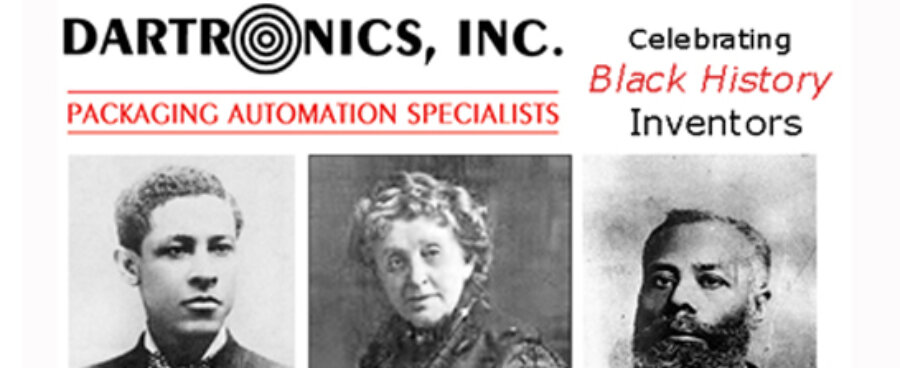Learn how just three inventors revolutionized: the machinery, shoe, airline, railroad, oil, construction, and mining industries.
 Miriam E. Benjamin (1861-1947) was the second black woman to receive a patent from the U.S. government for her gong and signal chair invention. Benjamin was born free in Charleston, South Carolina, in 1861, but her family moved to Boston to access better education for her and her siblings. In 1888, while working as a school teacher in D.C, Miriam received her patent for the Gong and Signal Chair.
Miriam E. Benjamin (1861-1947) was the second black woman to receive a patent from the U.S. government for her gong and signal chair invention. Benjamin was born free in Charleston, South Carolina, in 1861, but her family moved to Boston to access better education for her and her siblings. In 1888, while working as a school teacher in D.C, Miriam received her patent for the Gong and Signal Chair.
The chair’s notification system alerted an attendant when assistance was needed. By depressing a button, a gong or ring would sound at the exact moment that a red signal or flag on the chair itself would be made visible. The system was later adopted by the U.S. House of Representatives and was a precursor to the signaling system used on airplanes for passengers to seek assistance from flight attendants.
 One hundred thirty years later, Benjamin’s invention is still an important tool for customer service in the airline industry and manufacturing factories. The device itself was the precursor to the flight attendant call button that is still used daily. And manufacturers still use this concept to signal when an issue has occurred on the factory floor.
One hundred thirty years later, Benjamin’s invention is still an important tool for customer service in the airline industry and manufacturing factories. The device itself was the precursor to the flight attendant call button that is still used daily. And manufacturers still use this concept to signal when an issue has occurred on the factory floor.

Elijah McCoy (1844 – 1929) was born free in Ontario to parents who were fugitive slaves that escaped from Kentucky through the Underground Railroad. At the age of 15, Elijah left the segregated Canadian school system for a better opportunity to study in Scotland, where he was certified as a mechanical engineer. After completing his studies, Elijah returned to the U.S. as a “master mechanic and engineer,” but he was unable to find work in his new hometown: Ypsilanti, Michigan, as an engineer.
Elijah was forced to take a position as a fireman\oilman on the Michigan Central Railroad. As an oilman, Elijah had to apply oil to the axles and bearings to a train that was forced to stop every few miles for lubrication. And after observing the clear inefficient practice in his own job, he was resolved to use his mechanical mind to eliminate the frequent stopping necessary for the lubrication of any train! By 1872 McCoy created a “lubricating cup” that automatically dripped oil when needed.

McCoy’s “lubricating cup” was met with enormous success, and orders for it came in from railroad companies all over the country. His device would be adjusted and modified in order to apply it to different types of machinery. Versions of the cup would soon be used in steam engines, naval vessels, oil-drilling rigs, mining equipment, factories, and construction sites. It’s that the lubrication device became so important to the machinery industry!
 Ernst Matzeligers (1852-1889) was a self-taught mechanical engineer who immigrated to Massachusetts from Guiana at just twenty years old. While running a shoe-stitching machine for a manufacturer in Lynn, Massachusetts, he observed the difficult movements required to stretch shoe leather around a last. After long days at the factory, Matzeliger used reference books and a secondhand set of drafting instruments to build his first model out of wooden cigar boxes, elastic, and wire. Early attempts to mechanize the process had failed before Matzeligers success! After two years, his prototype was complete. By automating the process, his lasting machine revolutionized the shoe industry by significantly changing the manufacturing and selling of shoes.
Ernst Matzeligers (1852-1889) was a self-taught mechanical engineer who immigrated to Massachusetts from Guiana at just twenty years old. While running a shoe-stitching machine for a manufacturer in Lynn, Massachusetts, he observed the difficult movements required to stretch shoe leather around a last. After long days at the factory, Matzeliger used reference books and a secondhand set of drafting instruments to build his first model out of wooden cigar boxes, elastic, and wire. Early attempts to mechanize the process had failed before Matzeligers success! After two years, his prototype was complete. By automating the process, his lasting machine revolutionized the shoe industry by significantly changing the manufacturing and selling of shoes.
 The manual process of lasting averaged the fifty pairs a skilled laster could make by hand; his device produced 700 pairs of shoes per day! Shoe prices dropped by nearly half, and he made shoes affordable to a greater number of people for the first time. Matzeligers’ Lasting Machine is considered the most important invention for New England and the greatest forward step in the shoe industry!
The manual process of lasting averaged the fifty pairs a skilled laster could make by hand; his device produced 700 pairs of shoes per day! Shoe prices dropped by nearly half, and he made shoes affordable to a greater number of people for the first time. Matzeligers’ Lasting Machine is considered the most important invention for New England and the greatest forward step in the shoe industry!
Miriam E. Benjamin, Elijah McCoy, and Ernst Matzeligers were just three black innovators of many unsung heroes from history. As inventors and distributors of manufacturing equipment ourselves, we wanted to celebrate people who made such a big difference in the manufacturing world. Their inventions not only solved a problem but created a ripple effect of solutions that cut across over half a dozen industries. So if you have ever worn shoes, stayed in a hotel, watered your lawn, or rode trains or planes…you can thank these three black innovators!
Learn more about Dartronics and see our custom machinery solutions in action!
Take A Free Evaluation! Email us at Sales@dartronics.com or Call Dartronics at +1 (800) 298-8936 for more info.

